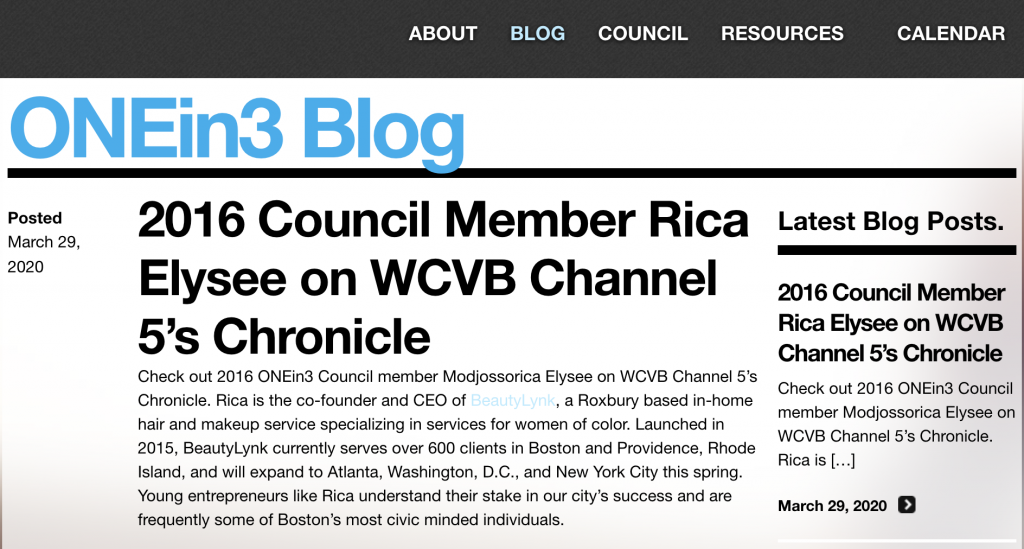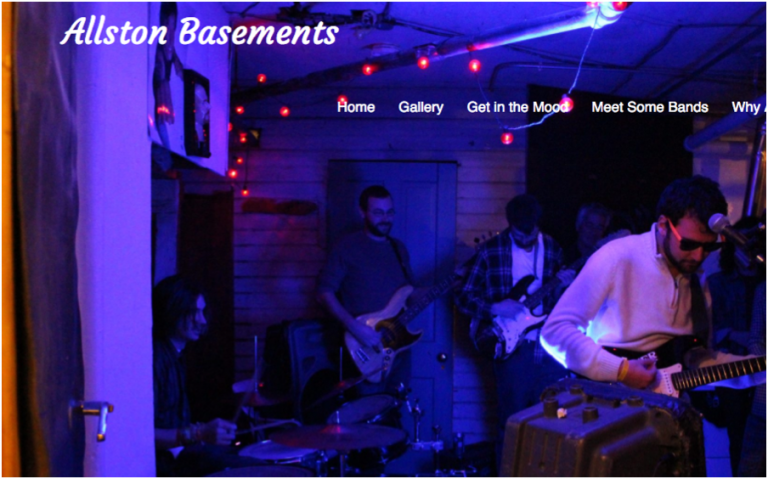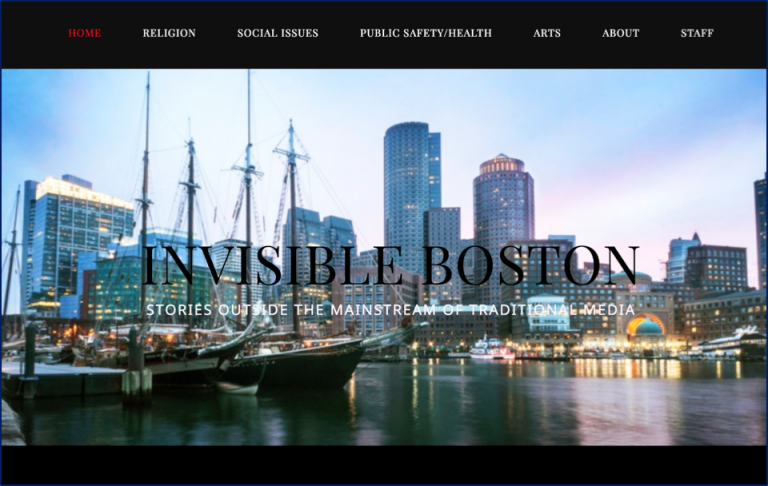Emerson on WordPress, Part 1
3 problems, one solution.
Elizabeth Parfitt wanted to get first year writing students to be engaged, motivated and to feel like their classroom work was important and relevant.
The WERS News team wanted a professional-looking website – but WERS is run entirely by students who have limited time, resources, and web development experience.
Tim Riley wanted an easier way to manage his files and collect assignments.
Surprisingly, all 3 problems were addressed by using the same tool.
Part 1: WordPress and Research Writing
Background:
Elizabeth Parfitt teaches WR121: a research writing class required for freshmen. Required courses can be difficult to teach, as keeping students engaged can be challenging. In order to increase student motivation, Beth wanted the work her students were doing in the classroom to be connected to the world outside of the classroom.
Beth designed her section to focus on Boston and the Creative Process. There are several components to the syllabus:
- Students work in groups to research, write, and design Public Service Announcements for ONEin3 Boston, an organization that “connects Boston’s young adults with resources related to home buying, business development, professional networking, and civic engagement.” In order to facilitate communication with ONEin3 as well as with the filmmakers who will film the PSAs, Beth wanted to find a way to keep the work in a central place that is accessible to those outside Emerson.
- Students do independent study research that relates to the city of Boston.
- Students also study blogs as a genre of writing: their purpose, best practices of blog writing, and how bloggers convey a persona and voice.
Implementation:
Beth has a group blog that all students can post to (She teaches two sections of this class, and both sections share the group space.) This blog is the hub of class activity and is used for course management. Students post their ONEin3 PSA work to this class blog for peer review. Classmates comment on the blog post, and Beth comments there as well. Students know that Beth will be looking at the feedback they give to their peers, and they do write quite a bit! When it is time to revise, both student and professor feedback is located in one convenient place.

Students also have individual blogs, where they document their progress on individual research projects. Links to the individual blogs for both sections are located in the sidebar of the group blog. Students are writing for an audience outside of the walls of the classroom here as well: this is a chance for them to share their solo work with a community of writers.
On the first day of the semester, Beth establishes that public peer review and collaboration will be a foundation of the class. Students who would rather not participate are free to join one of the 44 other sections of the course. As far as privacy goes, Beth never releases grades through WordPress, but she does publicly comment on student work. However, the blogs are set up so that students need to approve comments before they appear. If there is a comment they don’t want the world to see, they can choose not to approve it – the comment will still be visible to them.
Findings:
- “Students who don’t like to talk in class love to talk on the blog – all of a sudden they have a voice!”
- If students “write for their mom” instead of for an academic audience, it can result in better writing. It may be less formal, but it is more succinct and focused.
- Students should write their posts and comments in Word first, and then paste them into the comment box.
- The public nature of the blogs made the work feel relevant and important. Students could send their blog link to family, friends, and anyone else they would like to show.
- Students were more interested in designing and personalizing their blogs than Beth had anticipated. Some of the blogs became quite customized and professional looking.
- The blogs have worked wonderfully to develop students’ voices. Some blogs become fan favorites and racked up lots of visits. On the midterm evaluation, students indicated that they wanted to do even more reading of each other’s work.
- There was a learning curve in the first couple of weeks for students and professor both. (Beth hadn’t used WordPress before this semester). Once everyone started using it, they picked it up relatively quickly.



